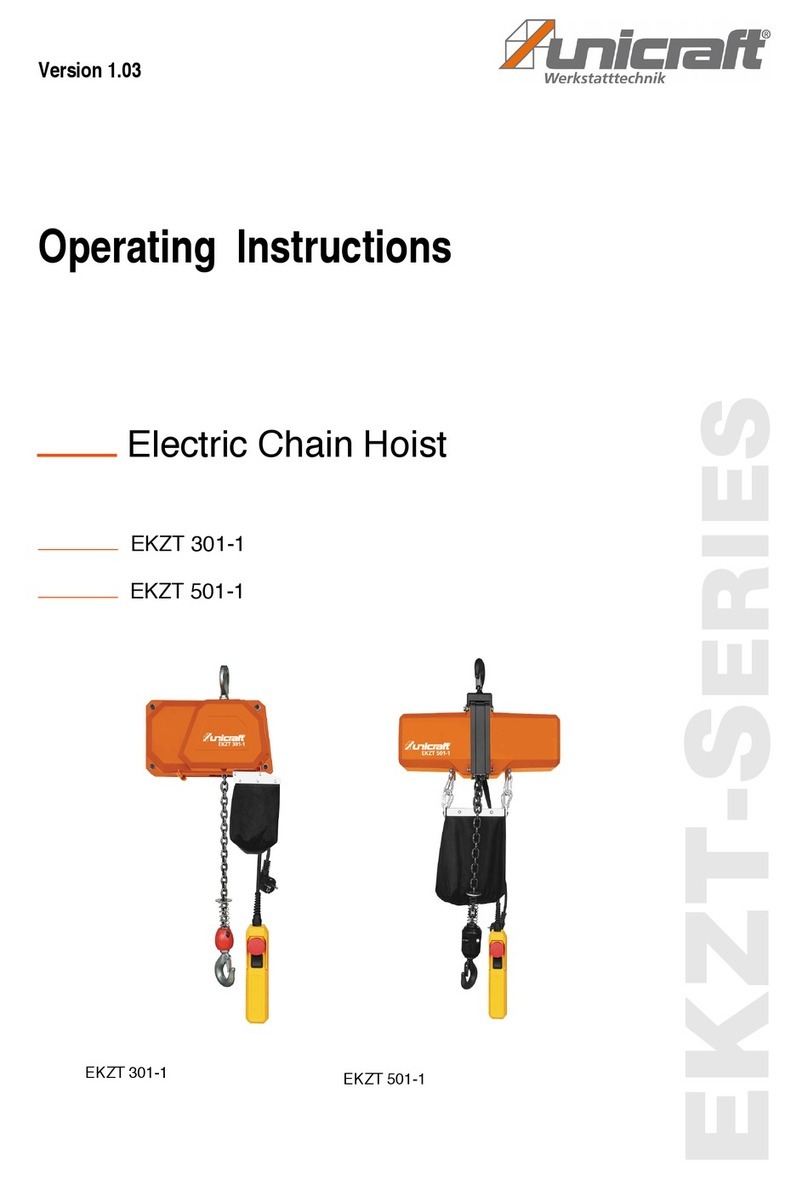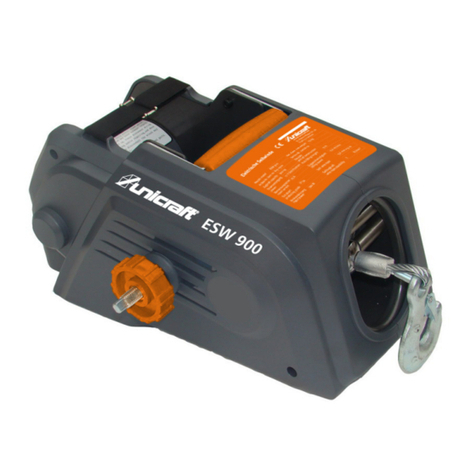
6 EKZT-Series | Version 1.04
Intended use
2.5 General safety regulations
Upgrading, conversion, maintenance and inspection
work may only be carried o t by trained personnel when
the nits are not in operation.
It is pointed o t that any na thorized modifications and
modifications to the machine are not permitted for safety
reasons.
The operating staff m st always make s re that the max.
Carrying capacity is not exceeded.
Stopping nder a s spended load is prohibited as loose
objects can fall off at any time.
The transportation and lifting of people is prohibited. It is
not permitted to enter the lifting device.
2.6 Safety information for operating personnel
No operational mode which co ld compromise the safety
of the chain hoist may be ndertaken
It is the responsibility of the operator to ens re that no
na thorised personnel work on the the chain hoist (e.g.
also by working on eq ipment in a manner contrary to
a thorised se).
It is the responsibility of the operator to check the the
chain hoist at least once before se (once a day) for ex-
ternally apparent damage or defects and to report any
changes (incl ding to the way the machine is operating)
which are likely to compromise safety.
It is the responsibility of the operator to ens re that the
the chain hoist is operated only in perfect order and con-
dition.
It is the responsibility of the operator to insist that oper-
ating personnel m st wear protective clothing wherever
necessary.
Under no circ mstances m st safety devices be remo-
ved or p t of operation (potential risk of serio s cr shing,
danger to life).
If it is necessary to remove any safety devices for fitting,
repair or maintenance work, they m st be re-installed im-
mediately after maintenance or repair is complete.
2.7 Safety marking on the electric chain hoist
The following safety marking is attached to the electric
chain hoist (fig. 1), which m st be observed and follo-
wed.
Fig. 1: Safety marking
The safety labels attached to the electric chain hoist
m st not be removed. Damaged or missing safety mar-
kings can lead to malf nctions, personal inj ry and mate-
rial damage. They are to be replaced immediately.
If the safety markings are not immediately recognizable
and comprehensible, the electric chain hoist m st be ta-
ken o t of service ntil new safety markings have been
affixed.
2.8 Check
Hoist chains are testable s spension elements. It is the-
refore the directives iss ed by the German Employers'
Liability Ins rance Association, Zentralstelle für Unfall-
verhüt ng for ro nd steel chains in hoist operation, the
overtesting g idelines and the test reg lations according
to DIN 685 part 5 Nov. 1981, UVV, DGUV reg lation 54
and UVV, DGUV reg lation 52 and DIN EN 818-7 dated
September-September 2002.
The entry in the crane test book m st be made via re-
pairs and tests carried o t (for example, setting- p work
on the brake or cl tch).
3 Intended use
The electric chain hoist m st only be sed for lifting, lo-
wering and moving free-moving loads weighing p to the
maxim m specified load.
The electric chain hoist may be operated only by per-
sonnel who have been trained in its se.
NOTE!
In each case the valid reg lations in the co ntry of
se are to be considered (in the in each case valid
version) In Germany at present z.Zt.
DGUV Reg lation 1 - Principles of Prevention DGUV
Reg lation 3 - Electrical Installations and Eq ipment
DGUV reg lation 52 - Cranes
DGUV Reg lation 54 - Winches, Hoists and Hoists
DGUV R le 100-500 Chapter 2.8 (BGR 500) - Load
Handling Eq ipment in Hoist Operation DGUV Prin-
ciple 309-001 - Testing of Cranes EN 1494 - Mobile
and mobile lifting eq ipment
EC Machinery Directive 2006/42 / EC





























